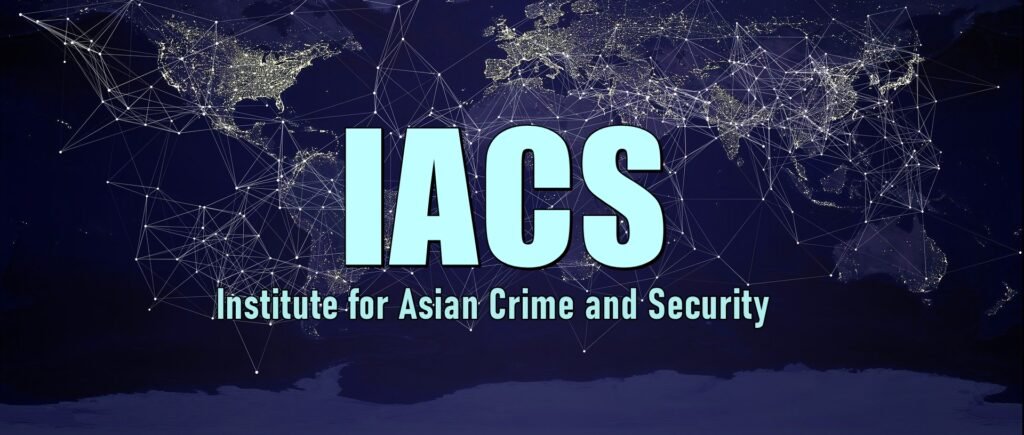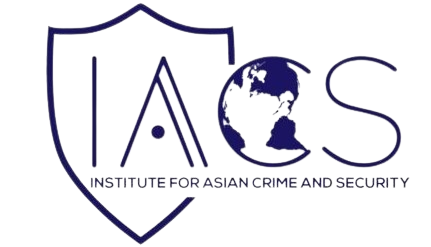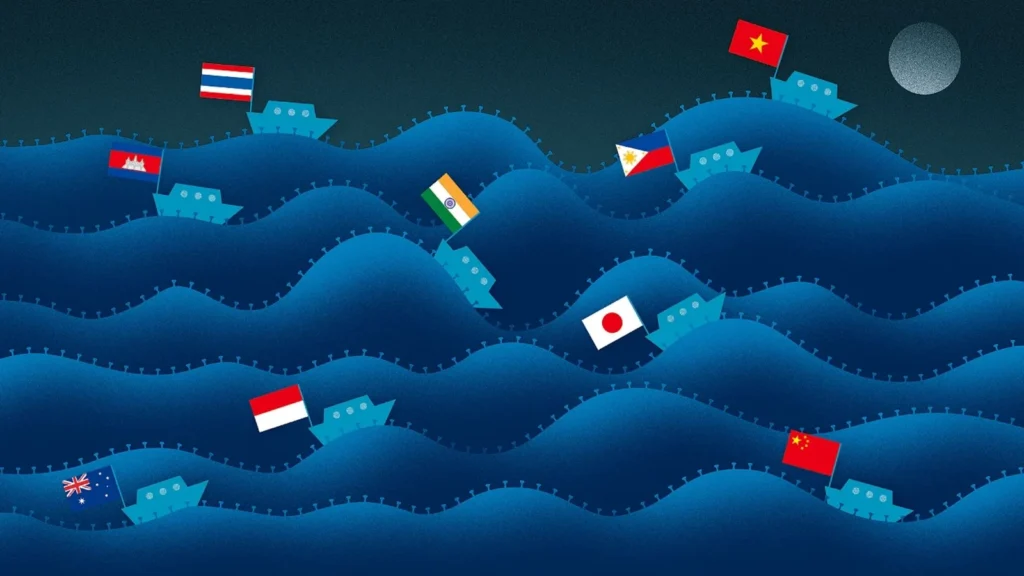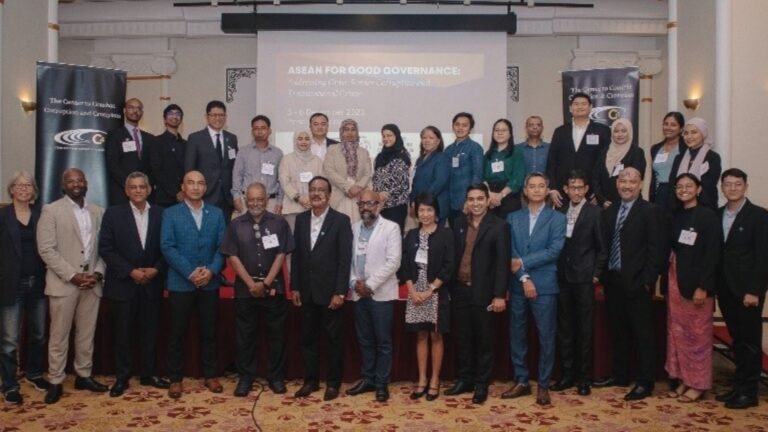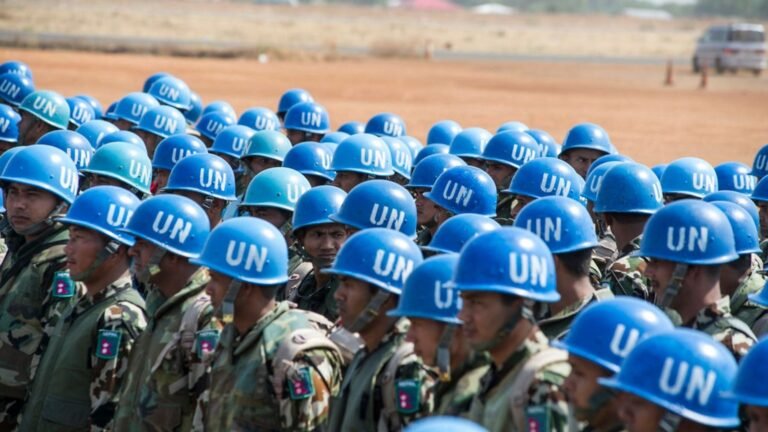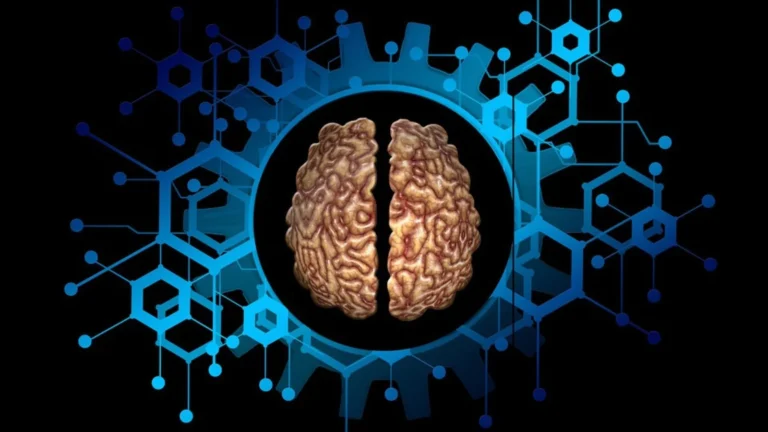While the COVID-19 pandemic is continuing to challenge normal life in different aspects across Southeast Asian countries, illegal drug traders have not yet been impacted directly nor restricted with their trends and patterns. The Golden Triangle and the Great Mekong Sub-region countries are still proving to be the predominant areas for the production and trade of synthetic drugs in comparison to the rest of the regional countries. When COVID-19 began in early 2020, in comparison to other criminal activities, most transnational drug trafficking shifted to maritime routes and/or online platforms due to the restrictions placed on land and air travel. The UNODC has recently reported that the pandemic and its related effects have not influenced the trend and patterns involving illicit drug trade across Asia and the surrounding regions. Furthermore, the military coup of Myanmar’s pseudo government in February 2021 did not also curb the complex situations of amphetamine trafficking in this country and beyond.
When the data does not reflect exactly the real picture
Over the last few decades, Southeast Asia has been a key area for transnational drug crimes. The number of people using drugs in the region has increased rapidly, and synthetic drugs are the most trafficked commodity. Some analysts report that in Southeast Asia, there has been an explosion of illegal drug production. In 2019, the United Nations Office on Drugs and Crime (UNODC) valued the Southeast Asian drug market at about $60 billion. The region has become one of the largest producers and markets for synthetic drugs in the world. It is estimated that over the past 10 years, drug production in Southeast Asia has increased by about 30%, and heroin and morphine production has increased by 88% (from 7.1 tons to 13.3 tons). Unsurprisingly, the Golden Triangle has continued to be the center of drug production in the region, mainly involving opium and synthetic drugs in tablets and crystal form (i.e. “ice”). While the annual production of opium reached up to 650 tons, the amount of seized methamphetamine in Southeast Asia amounted to 82 tons, an increase of more than eight times from levels observed between 2007 and 2017, accounting for 45% of global seizures. In particular, the volume of synthetic drugs seized was much larger than 170 tons, of which 5 countries in Southeast Asia alone accounted for 71% of that amount, namely Myanmar, Laos, Thailand, Cambodia, and Vietnam. In China, the amount of crystalline synthetic drugs seized has decreased, while the number of synthetic drugs pellets seized is higher, averaging 130 million tablets per year.
A police officer from the Narcotics Control Board stands guard in front of bags of confiscated drugs during the 50th Destruction of Confiscated Narcotics ceremony in Ayutthaya province, Thailand, June 26, 2020.
/cloudfront-us-east-2.images.arcpublishing.com/reuters/I5KEHZC2GNLKBCRGCDQ4H4UELM.jpg)
Statistics show that in 2019, more than 515 million synthetic drug tablets were seized in Thailand alone, with the main supply coming from Myanmar. In the early stages of the COVID-19 pandemic, law enforcement agencies reported in 2020 that the volume of heroin seized by authorities in East Asia and Southeast Asia is up to 11 tons. Of that amount, six (6) countries in the Greater Mekong Sub-region (China, Myanmar, Laos, Thailand, Cambodia, and Vietnam) seized 85%. Clearly, due to the impact of the Covid-19 epidemic, criminal organizations appear to change their operating methods and tricks (UNODC, 2021). Accordingly, there is a trend of increasing trading and recycling of synthetic drugs originating from the Golden Triangle area in Cambodia and then transporting it to other countries in the region by sea or across land borders. Almost all countries in the region are also facing an increasing number of new psychotropic substances (NPS) and chemicals that are not on the internationally recognized precursor chemical control list, which has been easily exploited to produce illegal drugs. Amphetamine-type synthetic drugs (ATS) have been widely used in almost all countries in Southeast Asia, including Thailand, Cambodia, Laos, Philippines, and Vietnam. Besides that, during the pandemic’s stressful time, cannabis use has increased in Indonesia, meanwhile, the sale and use of ketamine has also emerged in several countries in the region.
While Myanmar is still the primary concern, other nations have been exploited
Some scholars have stated that the military coup in Feb 2021 has not dramatically impacted, either directly or indirectly, the trends and patterns of the illicit drug trade in Myanmar, which reportedly exists for at least five decades. Accordingly, Myanmar remains the largest supplier of methamphetamine tablets due to political unrest in the eastern region, controlled by rebel groups (Andreas, 2019). Organized crime in that region is increasingly engaged in the preparation and transportation of synthetic drugs and other illicit narcotics (Luong, 2020b, 2020c). Not only do they transport large quantities of methamphetamine, but they also sell them at very low prices, making the price of synthetic drugs in Southeast Asia much lower than in other global markets. Cheap drugs are often traded within and across Thailand, Laos, China, and Myanmar. Crystals of greater purity are then brought to regional ports and shipped to Australia, Japan, New Zealand or South Korea. Most notably, drug-related crimes in the area operate using many sophisticated and dynamic methods and tricks. From the territory of the Golden Triangle bordering Myanmar, drugs are transported through Thailand, Laos, Cambodia to Vietnam and China and then to other countries. Recently, regional authorities have also discovered routes transporting cocaine from Latin American countries to Asia via Cambodia, the Philippines, Vietnam, and Hong Kong (China). Via air, postal and sea routes, several drug trafficking cases have been detected, especially by express mail delivery from the United States, the Netherlands, Australia, and Canada to nations across Southeast Asia. During the COVID-19 pandemic, the trend of maritime trafficking has been promoted and deployed by the traders between suppling states (mainly Myanmar), via transit countries (e.g. Thailand, Laos, and Vietnam), and to the areas of demand (the rest of the Southeast Asian countries, Australia, New Zealand, Japan, and beyond).
Indeed, Southeast Asian drug cartels typically prioritise to look for and sell their “goods” to wealthier markets such as Japan and Australia, but appear to have recently adjusted their business models as they increasingly target economies in their own region. Between 2016 and 2019, the number of people who reported that they have used drugs at least once each year has increased 10 times in Thailand. At the same period, the number of people confessing to drug usage to authorities in Malaysia has also increased 6 times. Recent surveys have shown that around 1 million people in Indonesia, the Philippines and Thailand in each nation respectfully have used drugs at least once in 2020. Therefore, once again, across the region, five countries in the lower Mekong Subregion are continuing to become the practical target of transnational drug crimes, tending to shift from production, trading, transportation and use of heroin and opium to synthetic drugs and psychotropic substances throughout only the two years of the COVID-19 pandemic period. Currently, the cost of synthetic drugs is much cheaper than those sold in some countries outside the region, and methamphetamine produced in this area is spreading rapidly and dominating the world market, particularly in the Philippines and Indonesia. Drug prices have plummeted across Southeast Asia, indicating a significant increase in supply. To some extent, it is understandable that the number of drugs seized increases year to year mainly in Shan state in Myanmar, which shares borders with China. In two years (from 2019 to 2020), the number of synthetic drug seizures in the provinces of Laos adjacent to the northern region of Thailand has increased from 266 kg to 5.7 tons, and the seizure of drug precursors has also increased from 19 tons to 120 tons. Two big cases in Laos in July and October 2021 resulted in the seizure of around 72.6 million tablets, which October’s operation is recorded the largest amount of drug seizures ever seen in Asia with more than 55.6 million meth pills and 1.5 tons of methamphetamine. It has also been reconfirmed that, although the Asian Al Chapol had been arrested in January 2021, drug production and trading activities in this area are still being run by other transnational criminal gangs.
Strengthening cooperation to combat illicit drug trading is still insufficient
In the face of the above-complicated context, Southeast Asian countries have actively cooperated and participated in regional initiatives to improve the effectiveness of the fight against drug crime, especially within the framework of cooperation with UNODC. At the same time, those countries also actively participate and make important contributions at regional and international seminars and conferences to share experiences and strengthen ties in crime prevention and drug control on a global scale. They have strengthened cooperation with UN agencies and international organizations such as the International Drug Control Commission (INCB), the Colombo Plan Advisory Committee (Colombo Plan), and the International Criminal Police Organization (Interpol) in an effort to coordinate and implement the content of the United Nations Convention on Drug Control. They have taken advantage of the support and assistance of these organizations in training and capacity building, thereby enhancing staff qualifications, technical projects, and the implementation of related criminal justice assistance requests.
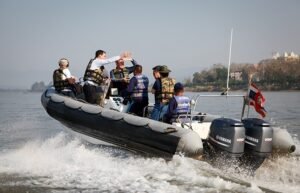
Collaboration to combat drug trafficking in Mekong River (Source: https://www.afp.gov.au/news-media/platypus/drug-routes-out-golden-triangle-afp-helps-tell-story)
Although cooperation efforts in the fight against drug crimes among Southeast Asian countries have achieved remarkable results, certain shortcomings still exist in reality. Accordingly, the cooperation mechanism is complex, but the actual effectiveness has not been high due to disagreements in drug crime prevention and control among countries around the world. The focus continues to involve five main issues including: global drugs; human rights issues in drug prevention and control; the issue of decriminalization of drug crimes and the application of commensurate penalties in EU countries; the application of the death penalty to drug crimes; and the legalization of the use of certain drugs (Luong, 2020a, 2020c; Smith, 2019). The trend of legalizing the use of some pain relievers containing drug precursors (opioids, morphine, etc.) is being accepted by many Latin American and European countries (UNODC, 2021). In particular, Chile, Peru, Bolivia, Colombia and Uruguay called for the legalization of cannabis use. Meanwhile, Russia, the United States, China, and many Asian countries do not support this trend, saying that it is necessary to strictly control the production and transportation of psychotropic substances in accordance with the spirit of the United Nations International Convention on Drug Control. Yet, in Thailand, the defacto decriminalization of cannabis since January 2022 (although authorities have left a grey area around its recreational use) has created challenges for ASEAN nations to rethink their current drug control policies.
In addition, there are still differences and limitations in the international cooperation process, as the information exchange mechanism has not been expanded; it is still slow, much information is incomplete, and the regulations on investigation coordination and enforcement are still limited. Many criminals remain in hiding in foreign countries, as legal barriers have created difficulties. These are big barriers to drug prevention and control in countries around the world, especially in Southeast Asia, due to different drug control policies. Although they have promoted a drug-free zone since the 2000s, their failures (or readjustments) continue, perhaps due to their insistent plans to implement three-pillar integration: supply reduction, demand reduction, and harm reduction. Until now, no countries have been successful with these three promises in terms of long-term milestones. In fact, UNDOC considered that drug users should be treated like patients, not criminals in the region. Indeed, many governments in the area are beginning to consider the idea. However, until countries shift funding for addiction treatment from law enforcement to health care agencies, the number of drug abusers will still increase.
What will come next?
Predicting drug crime continues to still present a big challenge within most nations. Illicit drug usage remains a danger to the community and has seriously affected the health of people around the world. Southeast Asia continues to be one of the major producer markets for synthetic drugs in the world. It would appear that the types of drugs and drug markets will be increasingly diversified and expanded. These challenges require regional authorities to continue working independently and in a collaborative nature more closely to stem the current wave of transnational drug crimes. However, alongside supply reduction, countries should implement effective measures in harm reduction to support the health and well-being of drug users and also should develop sustainable healthcare systems for demand reduction. The so-called “war on drugs” in this region will continue to present a challenge to drug control policies that continue to seek a viable and effective solution.
References
Andreas, P. (2019). Drugs and War: What Is the Relationship? Annual Review of Political Science, 22, 57-73.
Luong, T. H. (2020a). Mapping on Transnational Crime Routes in the New Silk Road: a Case Study of the Greater Mekong Sub-region. The Chinese Journal of Global Governance, 6, 20-35.
Luong, T. H. (2020b). The Organizational Structure of Transnational Narcotics Trafficking Groups in Southeast Asia: A Case Study of Vietnam’s Border with Laos. Trends of Organized Crime, 23(4), 385-411.
Luong, T. H. (2020c). Transnational Crime and its Trends in South-East Asia: A Detailed Narrative in Vietnam. International Journal for Crime, Justice and Social Democracy, 9(2), 88-101.
Smith, E. (2019). Transnational Crime in Asia: Causes, Effects, Challenges. In V. Mitsilegas, S. Hufnagel, & A. Moiseienko (Eds.), Research Handbook on Transnational Crime (pp. 472-481). Edward Elgar Publishing
UNODC. (2021). World Drug Report 2021 – Global Overview: Drug Demand and Drug Supply. United Nations Office on Drugs and Crime (UNODC). https://www.unodc.org/res/wdr2021/field/WDR21_Booklet_2.pdf
Featured Image: © Illustration by Hiroko Aida and Michael Tsang
About the Author: Dr. Hai Thanh Luong is a senior researcher with the IACS. He has spent over fifteen years designing and training law enforcement agencies in Southeast Asia, mainly focusing on Vietnam. He focuses on cross-border crimes in mainland Southeast Asia, including drug trafficking, human trafficking, policing and police training, and Vietnamese criminal groups overseas.
